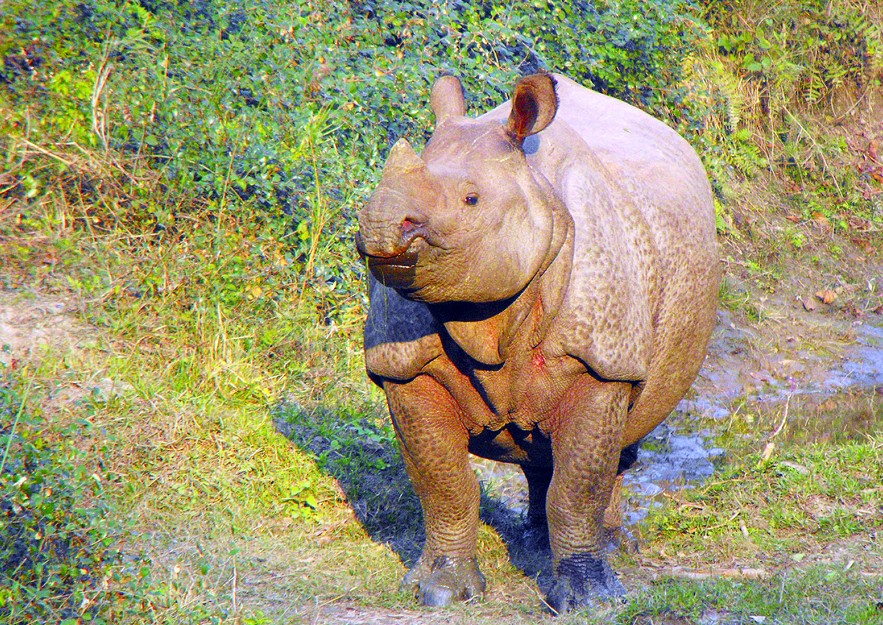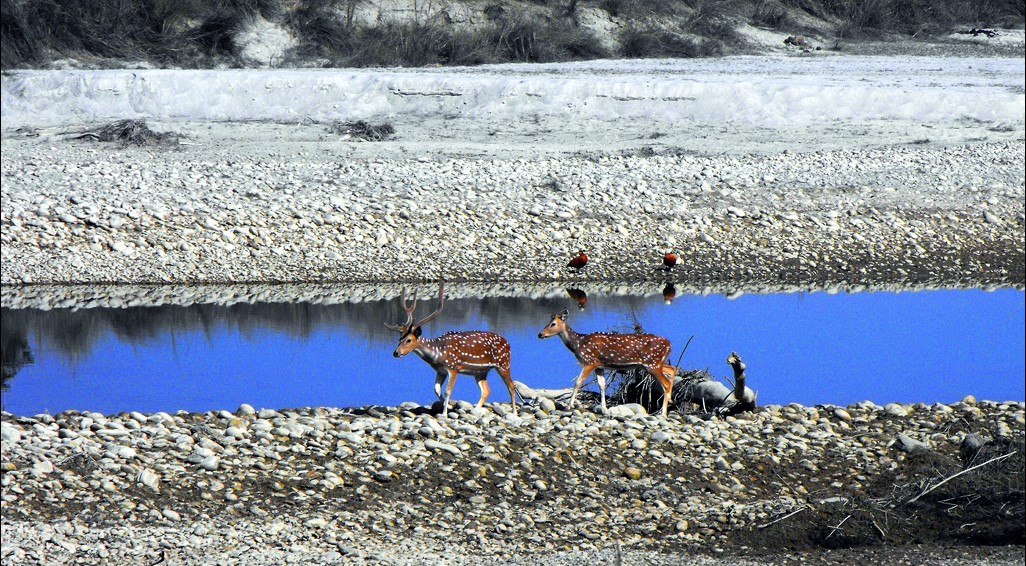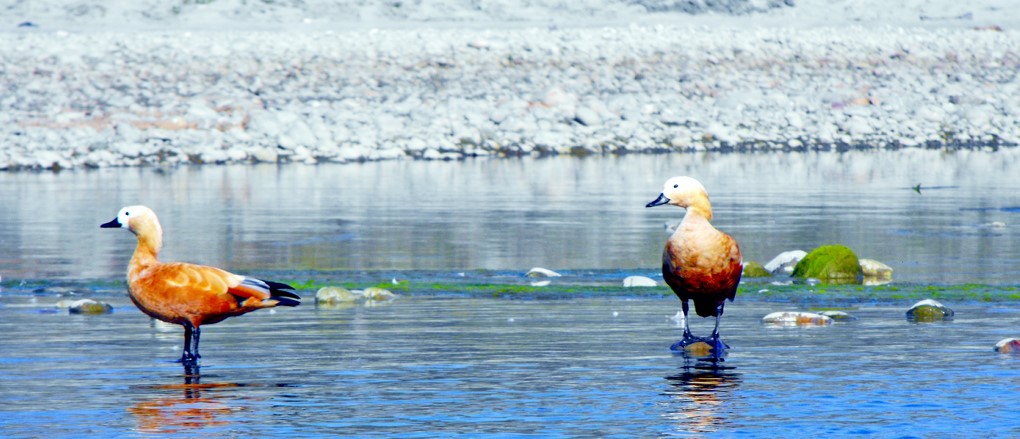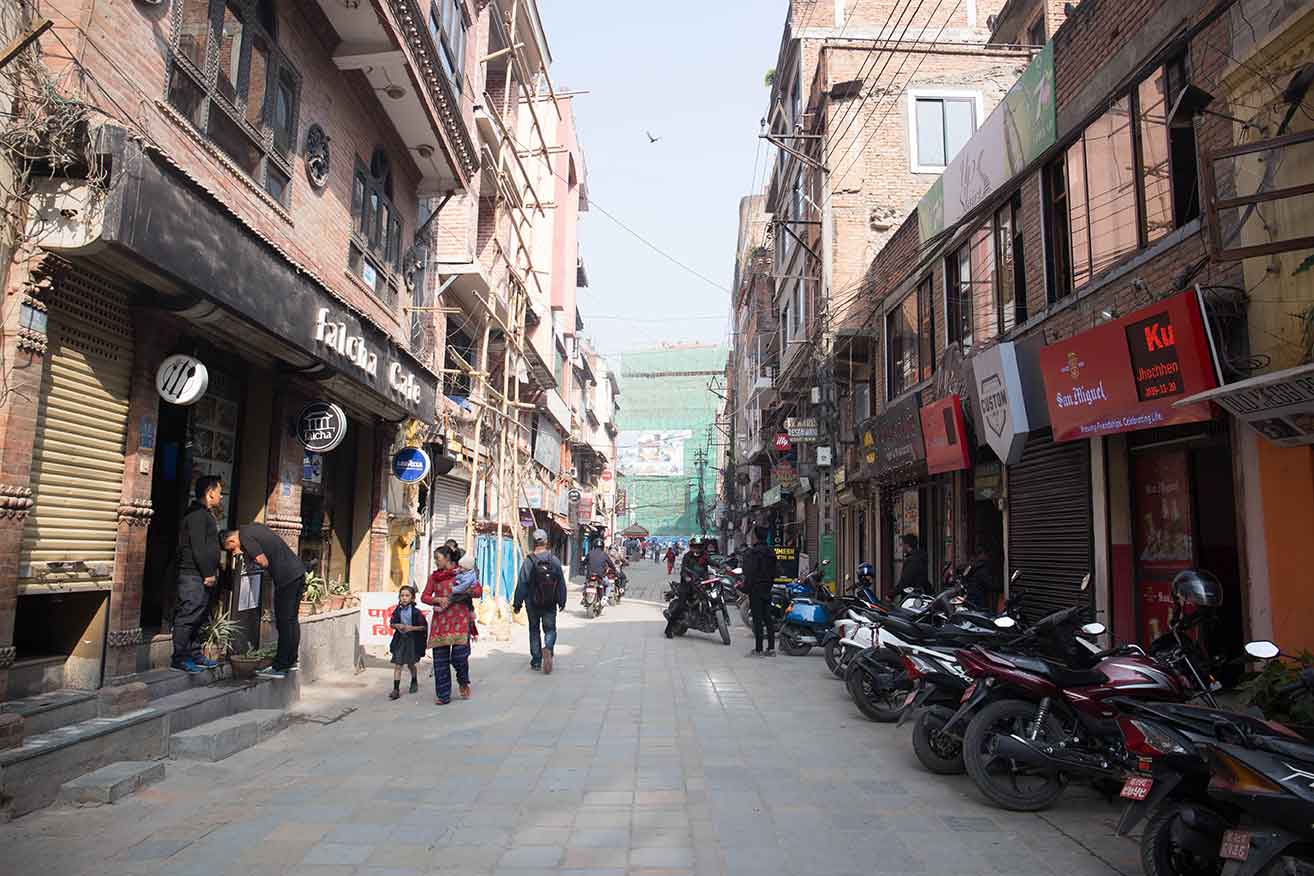There were many memorable moments during the recent visit I made to Temple Tiger, the venerable resort now located on the outskirts of Chiwan National Park. Some of these include multiple close encounters with animals (more on that later), a peaceful boat ride through early morning mist to a soundtrack of bird calls, and the unforgettable feeling of a baby elephant’s trunk exploring my palm. Yet, strangely, the memory that impressed me most deeply and lingered the longest was of the experience I didn’t anticipate enjoying.

“We’re going to visit Temple Tiger’s former location, inside the national park,” said our guide at some point in the day. What? I thought. Why? How could that possibly be interesting?
But we climbed into a jeep and set off, stopping along the way to gaze at deer, including several males with spectacular sets of antlers, one of whom walked right into our path, staring us down with confidence. We also saw gharials, and a seemingly endless variety of birds of all sizes and colors. I’m not sure if it was the time of year or the part of the jungle we were in, but the amount of birds, and wildlife in general, that I spotted on this trip far surpassed my previous visits to Chitwan. Electric blue kingfishers, two varieties of hornbills and two of storks, woodpeckers and photogenic pairs of ruddy shelducks, who migrate here from as far as Siberia—these are just some of the birds I added to my list. It helped that the nature guide—like all of the staff I encountered at Temple Tiger—was remarkably knowledgeable and friendly. Ambika Prasad Parajuli answered my repeated questions, not just patiently, but enthusiastically; his love for the area, the wildlife, and his work clearly showing as he did so. The presentation on the park’s flora and fauna he gave one evening was also great.
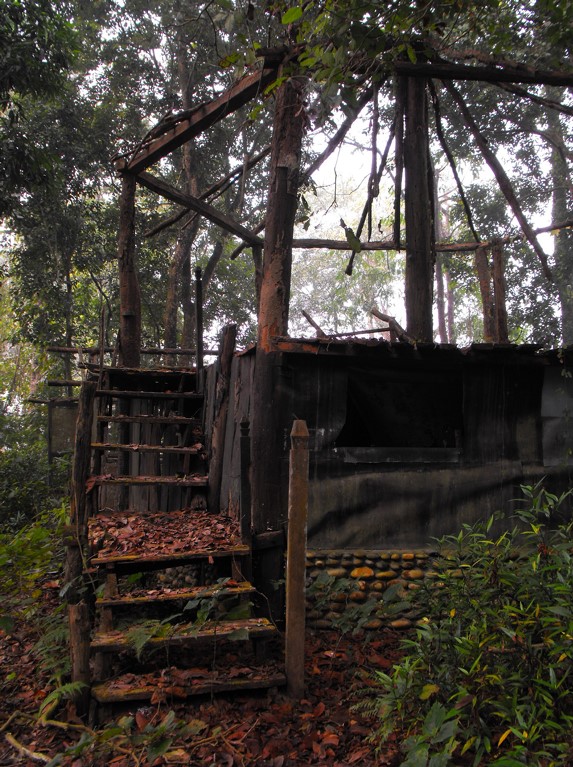
But back to that jeep ride. It took us a while, but eventually we ascended a small rise before pulling into a shaded circular clearing where we piled out of the vehicles. Ahead of us, amongst and beyond tall trees, were wooden buildings, raised several feet above the ground. These buildings had once been Temple Tiger’s jungle resort. Now, they were slowly, gently, falling to pieces. A tree lay across a path, a roof smashed where it had fallen upon it, and inside, rooms, overturned chairs, and decaying tables. Nature creeping back where humans had once built an enclave. It was unexpectedly mesmerizing; fascinating in a way that filled me with a sense of awe. Wandering past each building, peering into rooms, it was easy to imagine the rustic splendor that had been, and I understood then why these resorts inside the national park had been worth the premium rates—being inside, with nature in all its wild untamed beauty on all sides, is completely different to being in Sauraha, no matter how luxurious your surroundings.
Along the entry path, the nature guide stooped to point out a paw print and scratch marks. A tiger’s footprint, and the scratches, he told us, the way that the animal—usually a female—marks her territory. Standing in that spot, looking all around at what would have been a place of bustling, busy motion only a couple of years ago, but which was now deserted, it seemed the most wonderful irony that this should now be the sphere and terrain presided over by a giant, regal cat.
We moved on, and I saw dining rooms and kitchens, wires with the light fixtures removed. However, it was surprising how much remained. Later, when I asked about it, owner Basanta Mishra told me they had left fully expecting to be back soon. It’s something they were still working towards at the time I spoke with him, and which, according to recent reports in the media, might soon become a reality.

The observation deck will need repair if they do, it’s got a few boards loose, for sure, yet it still overlooks a most amazing expanse of wild, empty landscape, a strip of river bordering the view off on the right side. In the far distance, we glimpsed a rhino. I imagined being here at night, the only lighting, stars, a full moon—power generation was not allowed to be used at night within the park, to avoid disrupting the wildlife—looking out over this same space, spotting a tiger perhaps coming down to the river for a drink. All in my head of course, but the atmosphere and surroundings made imagining surprisingly easy.
I left the deck and went back to wandering amongst the buildings, glad we had come here and regretting that we’d soon be leaving it. Places like this hold a strange fascination, you can see it as a set to a movie, or as explorers might when coming across the ruins of an ancient civilization, perhaps, or a story of a place abandoned and now populated by ghosts.
There were many other highlights and memories I carry with me from the trip, some of which I have told you about already, while others include delicious food, great accommodation, and friendly staff —yet, the one I keep returning to is that tumble-down collection of buildings, an abandoned palace in the jungle, with the ruins themselves as a temple to a time in the past, and just there at the entrance, the spot where a tiger had marked her domain.
